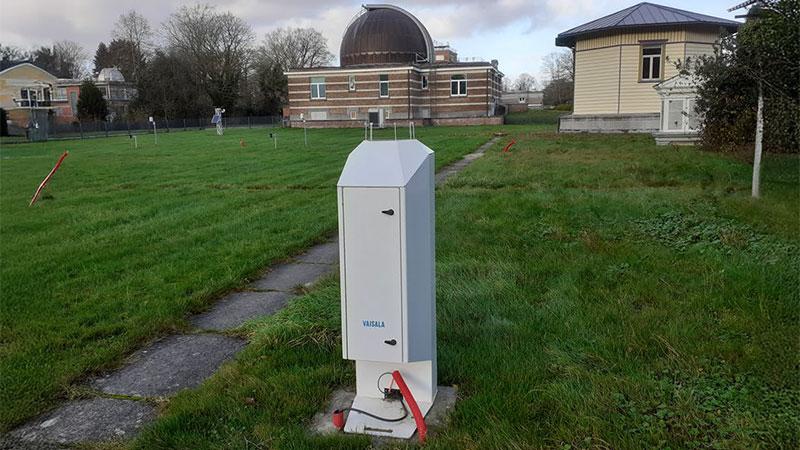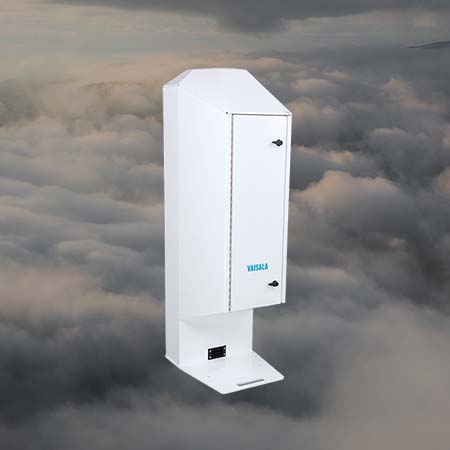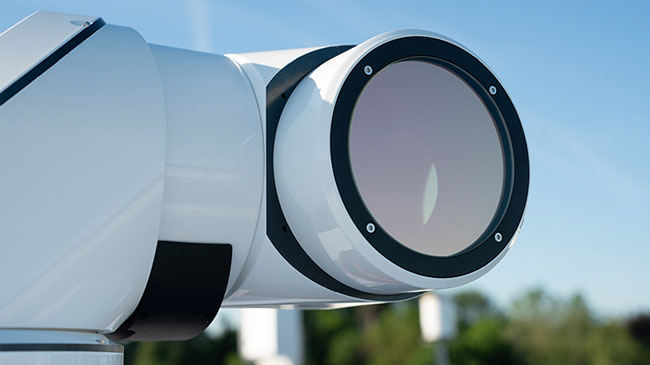Transforming atmospheric monitoring with real-time analysis in Belgium
The client: Royal Meteorological Institute of Belgium
Vaisala solution: Ceilometer CL61, WindCube® Scan
THE CHALLENGE: Addressing the gaps in atmospheric boundary layer profiling
Profiling the atmospheric boundary layer (ABL) has become increasingly important in recent years, especially for applications in monitoring and forecasting atmospheric transport dispersions.
Air quality modelling and emergency responses especially depend on the data for dispersion modelling, volcanic eruptions, and aviation safety concerning ash dispersion. Traditional observing systems have fallen short, often providing data close to the ground but lacking the actual profiling needed for comprehensive analysis.
THE APPROACH: Integrate depolarization data with wind profiling for enhanced ABL profiling
To address this challenge, the Royal Meteorological Institute of Belgium (KMI) combined data from Vaisala Ceilometer CL61 and Vaisala WindCube Scan.
With its depolarization feature, CL61 identifies particles and aerosols with groundbreaking accuracy. These parameters provide the ABL height and particle information needed for atmospheric monitoring. WindCube Scan provides 360°/3D wind awareness at long range, indicating the movement of particles.
This integration improves the understanding of what’s in the air, why it’s in the air, where the potential dust outbreak is coming from, and where it’s potentially going next. The combined data can improve dispersion modelling, which can be used to forecast and provide alerts about particle movement, for example, during a dust outbreak.
THE RESULTS: Greater ABL understanding and a foundation for future advancements
This innovative solution was put to the test on May 1st, when the KMI observed a stagnant dustcloud over Belgium. The combined CL61 and WindCube data revealed the presence of an aerosol mix. Further analysis showed green layers corresponding to marine aerosols, transported by a low-level jet from the North Sea. The yellow dust layers aloft were transported by continental airflow from the Sahara.
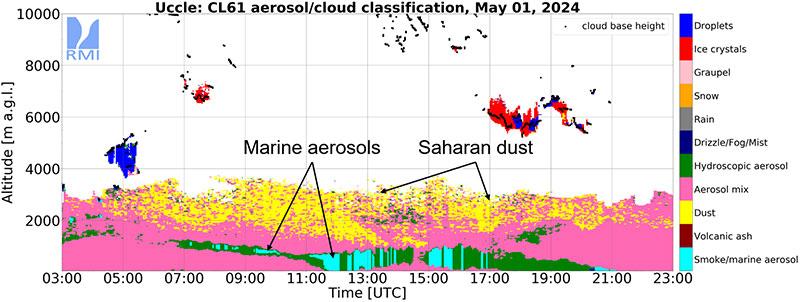
CL61 profile identifies marine aerosols shown in green and Saharan dust in yellow
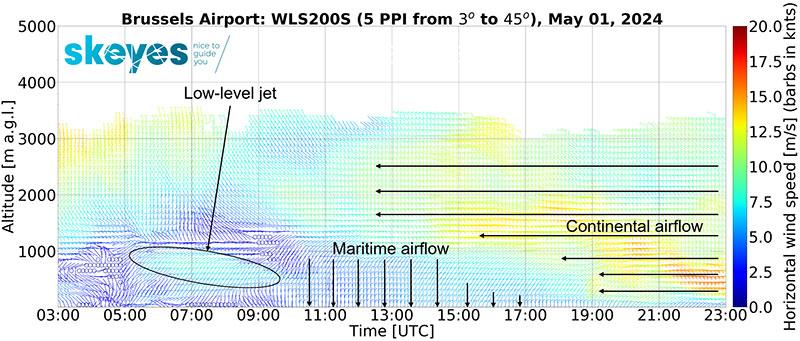
Wind lidar profile data to show low-level-jet from North Sea and Continental airflow.
The integration of these two data sources provided a clearer picture of the ABL's structure and composition, leading to several benefits. The ability to identify aerosol types and cloud phases has significant implications for air quality applications, while greater dispersion modeling accuracy is crucial for emergency response planning and real-time monitoring. Real-time data provides immediate insights into atmospheric conditions, which could be used operationally. Finally, open-source algorithms for automatic characterization of atmospheric particles make the solution accessible for further research and operational use.
“Combining real-time depolarization data with wind profiling has led to unprecedented insights into the atmospheric boundary layer, enhancing air quality assessments and dispersion modelling capabilities.”
Quentin Laffineur
Scientist, Royal Meteorological Institute of Belgium
This case study illustrates the value of combining depolarization and wind lidar data to tackle complex atmospheric monitoring challenges, offering a robust solution with significant operational benefits. This approach not only improved the understanding of the ABL but also provided a foundation for future advancements in atmospheric science and operational meteorology.
